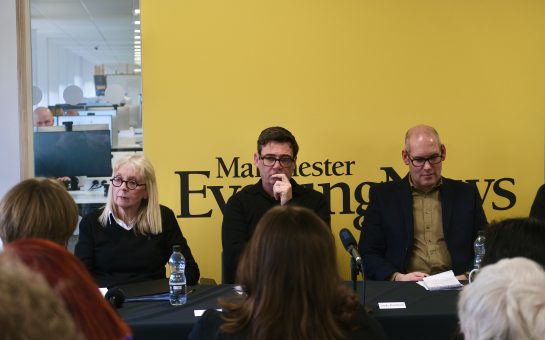Greater Manchester’s university hopefuls aiming at Oxford and Cambridge are only 24% successful in their applications – a lower success rate than Birmingham, Leeds, Newcastle and Liverpool.
Recent figures revealed that 159 out of 662 applications across all ten boroughs made by 16-17-year-olds were successful, significantly lower than several other counties, especially in the south.
Additionally, just 1% of 16-17 year-olds in the area decided to apply to Oxbridge in the first place.
However, Oxford suggested that those leaving school had a good chance of a place at their establishment despite long time suggestions of a bias towards those in the south.
A University of Oxford spokesman said: “Actually, 18.8% of applicants to Oxford were accepted last year.
“Greater Manchester applicants are doing very well indeed with a success rate of 24% well above the national average.”
These figures do not take into account those of Cambridge, who were unavailable for comment.
However, Christian Spence, Head of Business Intelligence at Greater Manchester Chamber of Commerce, said application figures from the area to Oxford and Cambridge were below the national average.
He added: “There are a large and varied number of reasons why young people from Greater Manchester choose to apply to particular universities.
“At the heart of the largest student population in Europe, Greater Manchester is home to over 100,000 undergraduates, postgraduates and beyond, and many local residents will choose to study close to home.”
Trafford had the highest rate of success in Greater Manchester, with 39 offers out of 153 submissions given the green light, while Stockport managed 34.
In stark contrast, Wigan, Rochdale, Salford, Oldham and Tameside could only muster 32 Oxbridge undergraduates combined.
Meanwhile, undergraduates from Surrey alone amounted to 263 – with the pattern repeated over many of the surrounding counties, including Hertfordshire and Buckinghamshire.
Mike Nicholson, Oxford’s director of admissions and outreach, admitted the geographical disparities of attainment were a huge concern.
“It is a national challenge. Universities can’t make a difference on their own,” he told The Guardian.
“We do our utmost to provide a welcoming, friendly environment for applicants from all backgrounds.”
Oxford and Cambridge are two of the oldest universities in the world, and offered almost 6,000 places to young students within England and Wales last year.
Mr Spence said: “There is evidence that a larger proportion of schools in our area could do more to help young people to aspire to the very top universities in the UK.”
A recent OFSTED report suggested schools focus on pupils more likely to improve their league table results – leaving pupils of the very highest ability often neglected.
He added: “This is a situation that helps neither the individual nor the pupil, as our most able people should be encouraged to both aim and to achieve as highly as they can.
“Oxford and Cambridge are not the only measures of success – the university system as a whole must not be seen as the be all and end all – but we must ensure that those with the highest abilities should be encouraged to take advantage of our global institutions.”
The Chamber of Commerce’s Employer Ownership of Skills project is expanding ways in which those leaving school can gain access to apprenticeships and work-based learning in the region.
Picture courtesy of Cimexus, with thanks.
For more on this story and many others, follow Mancunian Matters on Twitter and Facebook.



